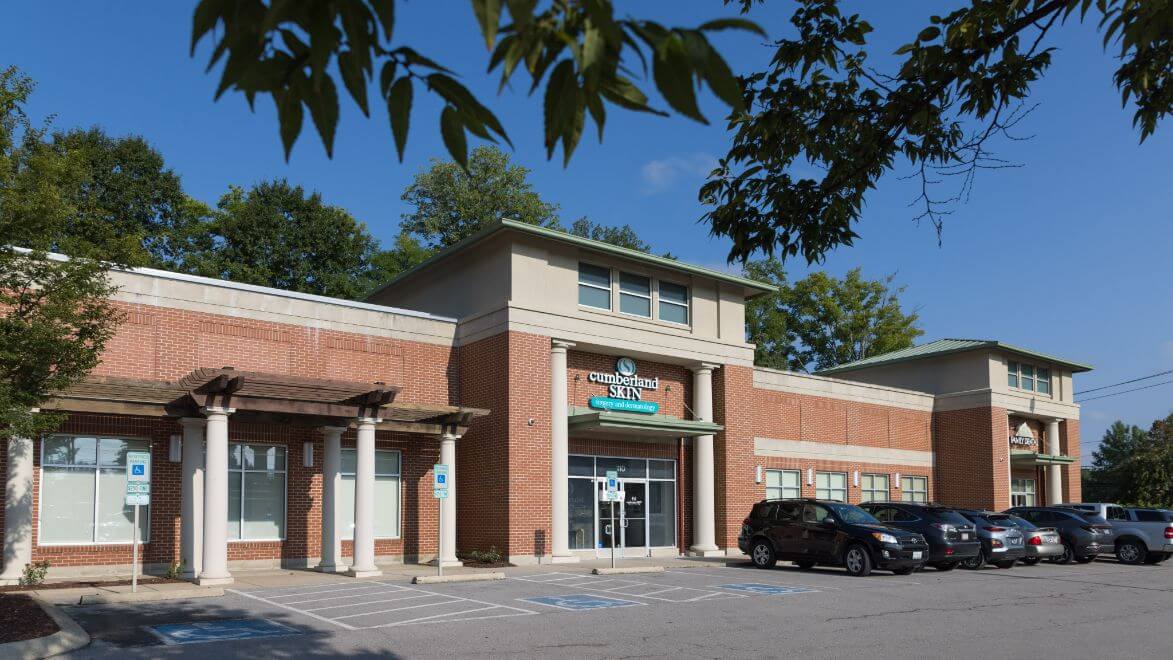Impetigo
There are three forms of impetigo:
Ordinary Impetigo is caused by Streptococcal germs. It appears as red sores that rupture quickly, ooze a fluid, and then form a honey-colored crust. It primarily affects children from infancy to age two.
Bulbous Impetigo appears as fluid-filled blisters caused by Staphylococcus germs. This contagious infection is carried by the fluid that oozes from the blisters.
Ecthyma is a more serious form of impetigo that penetrates to the second layer of skin (dermis). It is characterized by sores that are painful and/or fluid or pus-filled. These lesions most commonly appear on the legs or feet. The sores break open and scab with a hard yellow-gray crust. It can also cause swollen lymph glands in the affected area.
Recognizing the importance of prompt treatment, our dermatology providers offer specialized care for impetigo, providing effective solutions to alleviate symptoms and prevent the spread of infection. At Cumberland Skin, your skin is our priority. If you suspect impetigo, schedule an appointment with a trusted Cmberland Skin provider for a thorough evaluation and tailored treatment journey to healthy skin.
Examples of Impetigo
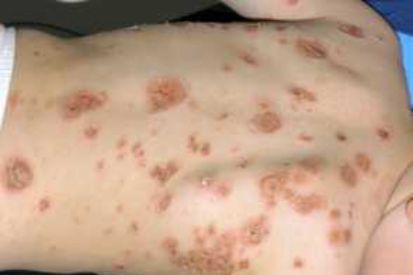
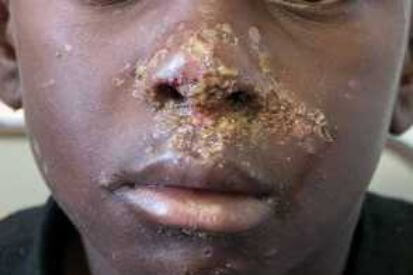
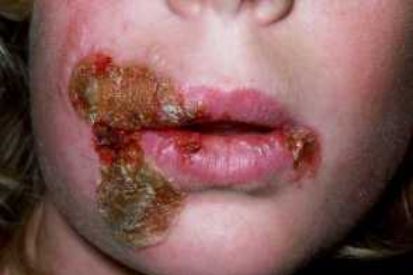
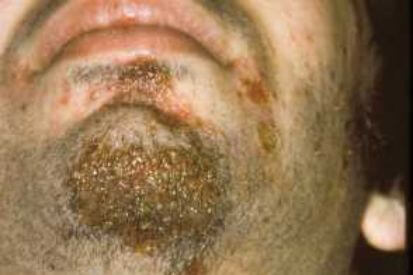
What are the Symptoms of Impetigo?
- Single or multiple blisters filled with pus, which pop easily and leave a reddish, raw-looking base and/or honey-colored crust.
- In most children, impetigo first appears near the nose and then spreads through scratching to other parts of the face, arms, or legs.
- Itchy blisters.
Causes of Impetigo
- Bacteria Staphylococcus aureus or Streptococcus pyogenes.
- Bacteria entering the skin through cuts, scrapes, or existing skin conditions.
- Bacteria exploiting the openings created by insect bites or the warm, moist environment around the nose and mouth.
- Direct contact with the sores or by touching items like towels or clothing that have met the infected skin.
- Warmth and humidity further promote the bacteria's growth, making certain environments more conducive to impetigo transmission.
How to Prevent Impetigo
- Regular Handwashing: Encourage frequent handwashing with soap and water, especially after activities that involve skin contact, playing in shared spaces, or using communal items.
- Prompt Wound Care: Thoroughly clean and cover any cuts, scrapes, or insect bites to prevent bacteria from entering the skin. Immediate attention to minor injuries is crucial
- Avoiding Skin-to-Skin Contact: Minimize direct skin contact with individuals showing signs of impetigo or other contagious skin conditions. Refrain from using personal items like towels or clothing belonging to an infected person.
- Cleanliness in Shared Spaces: Maintain cleanliness in communal spaces, particularly in schools, daycares, and sports facilities. Regular disinfection of surfaces and shared items helps prevent the spread of bacteria.
- Education: Teach individuals to use their own items for personal hygiene to reduce the risk of sharing bacteria. Educate individuals, particularly parents and caregivers, about the symptoms of impetigo and the importance of seeking medical attention promptly for diagnosis and treatment.
Impetigo FAQs
Yes, impetigo sores can be itchy. The red sores may break open, and the itching can be uncomfortable. Dermatologists can recommend treatments to soothe the itch and promote healing.
Impetigo is a contagious skin infection marked by red sores that turn into honey-colored crusts. It often appears around the nose and mouth. If you notice red sores that burst and form a golden crust, it might be impetigo.
With the right treatment, impetigo usually starts to improve within a few days. Dermatologists may recommend antibiotics to clear the infection. It's important to follow their advice for the prescribed duration.
How to Treat Impetigo
Topical antibiotics available over the counter, such as Neosporin, are not recommended for treating impetigo. Our dermatologists prescribe specific formulations tailored to combat the specific bacteria responsible for the infection.
In addition to antibiotic therapy, our team may advise gentle cleansing of the affected areas to remove crusts and promote healing. It is important to refrain from picking at the sores to prevent further spread of the infection.
If you suspect you or a loved one has impetigo, schedule an appointment with one of our dermatology providers today to get a customized treatment plan specific to your needs and begin the journey to healthy skin.
Related Blog Posts
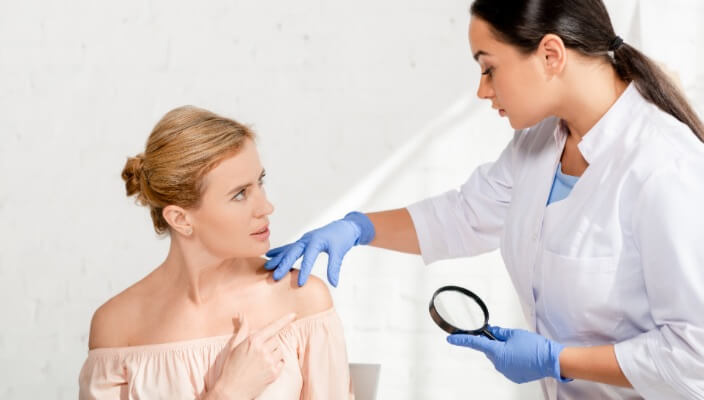
- Skin Cancer
- General Dermatology
- Chronic Skin Conditions
Learn more about the most common types of skin lesions we see at Cumberland Skin and how our dermatologists remove them.
Read More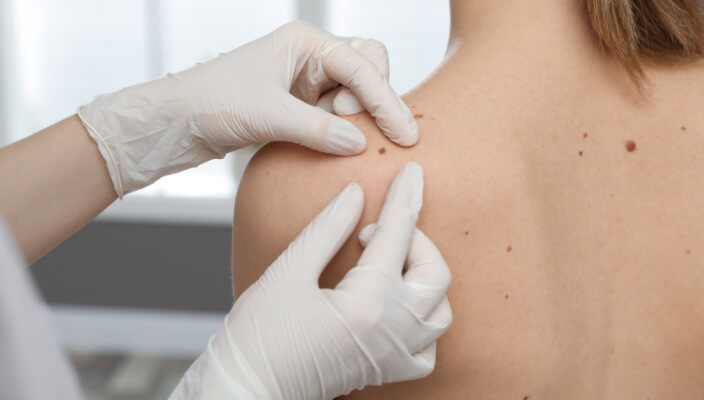
- General Dermatology
- Skin Exams
Preparing for your first dermatology appointment is important because it ensures everything goes as smoothly as possible and that your doctor is up-to-date on the status of your overall health and wellbeing. Here are our expert tips.
Read More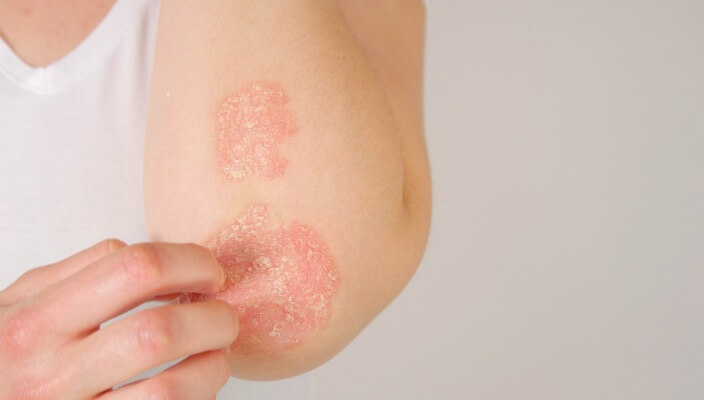
- General Dermatology
- Chronic Skin Conditions
Learn the differences between dry skin, eczema, and psoriasis, their distinct characteristics, and potential triggers. Gain valuable insights into identifying symptoms and seeking appropriate treatment to effectively managing these common skin conditions.
Read MoreFeatured Products for Impetigo

iS Clinical GeneXC Serum
GeneXC Serum is a revolutionary formula featuring our proprietary combination of Extremozymes, which are clinically proven to help protect, revitalize, and enhance the foundation of healthy skin while supporting multilevel protection and long-term visible improvements. GeneXC Serum contains 20% of our exclusive Vitamin C (L-Ascorbic Acid); which is formulated with a powerful combination of botanically sourced enzymes, antioxidants, and fruit acids sourced from both land and sea. These cutting-edge ingredients work synergistically to provide the most scientifically advanced, clinically proven benefits; improving the appearance of fine lines and wrinkles and evening the complexion, resulting in a more youthful, glowing appearance.
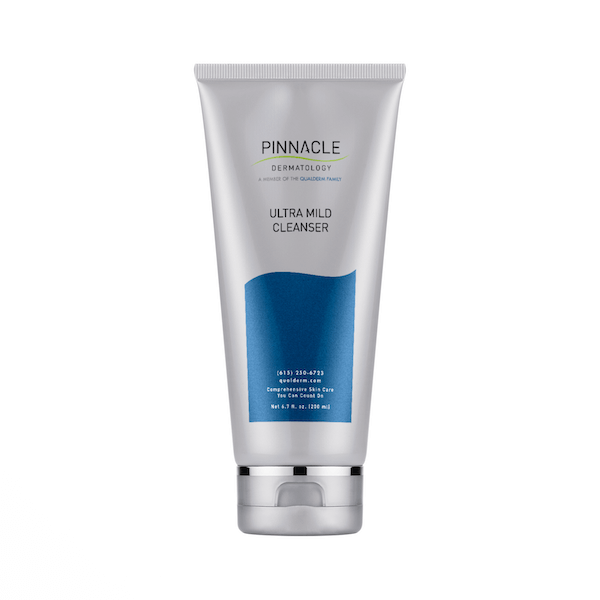
Pinnacle Skin Care Ultra Mild Cleanser
This light foaming cleanser is soap-free and ideal for all skin types. Contains liposome encapsulated vitamins with a light lavender scent. 6.7 fl oz / 200 mL


